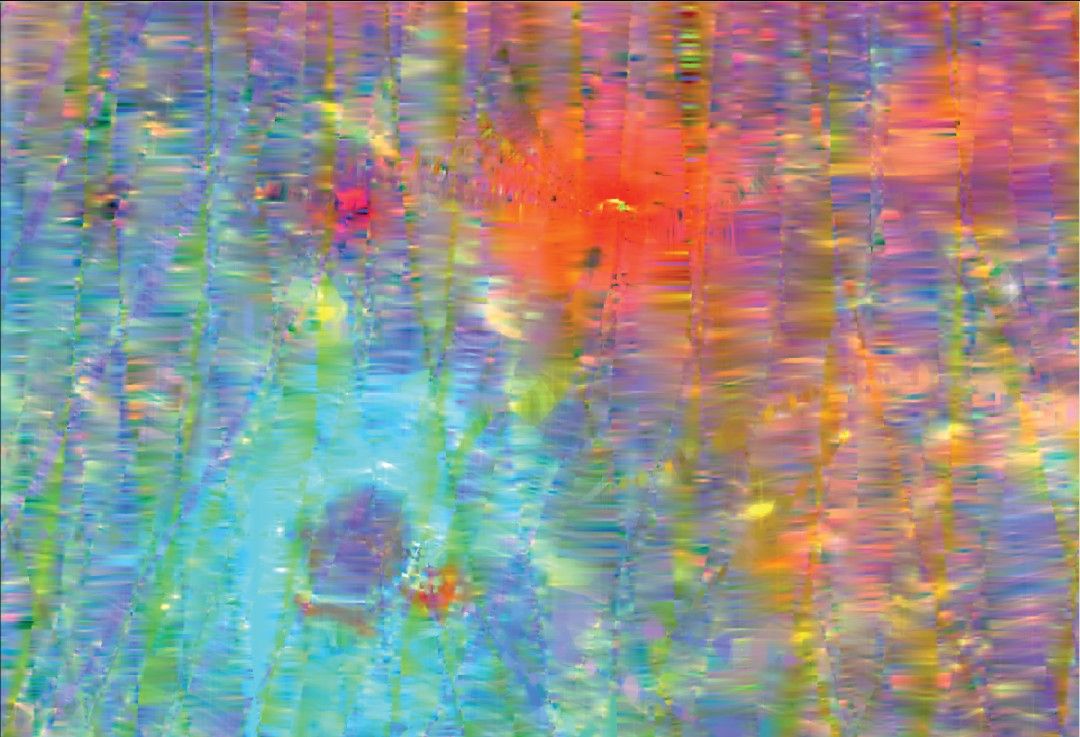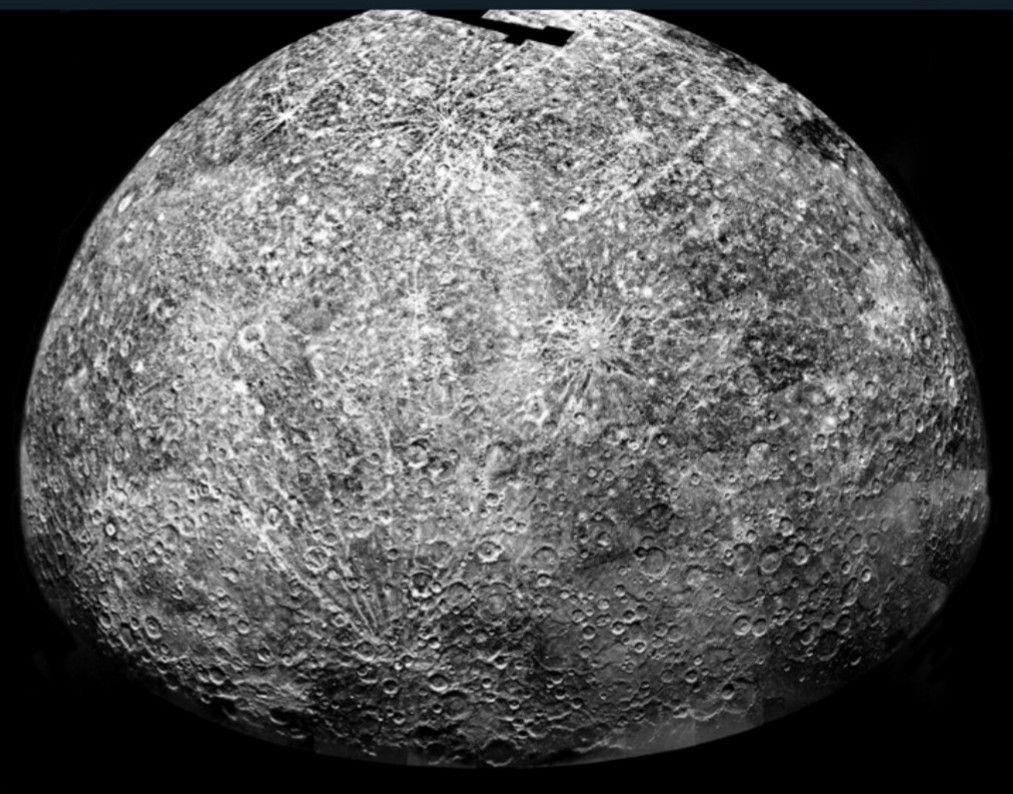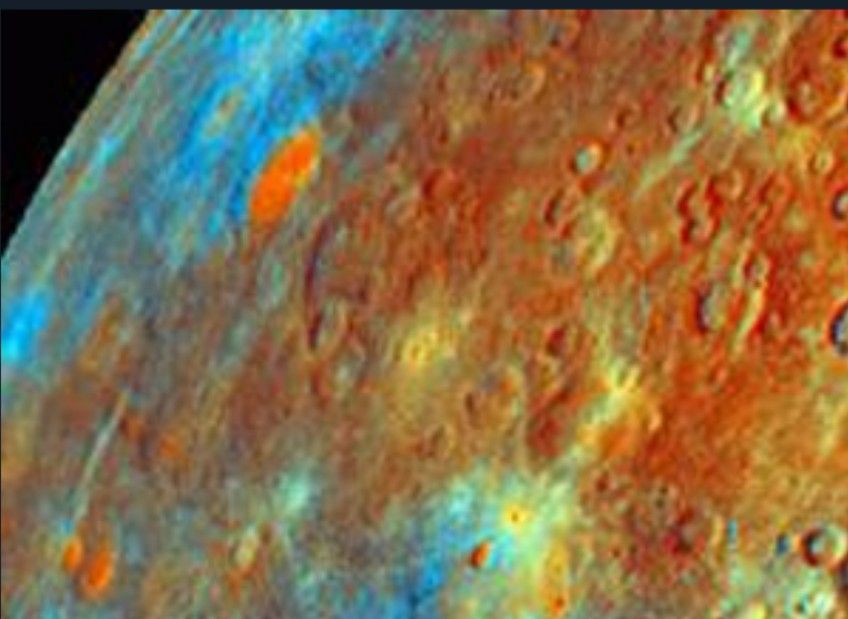~ How many more surprises will Mercury give us? ~
space·@teks·
0.000 HBD~ How many more surprises will Mercury give us? ~
*Mercury, despite its dizzying orbit around the Sun has been observed since antiquity. And after many centuries of observation, some facts that were taken for granted turned out to be wrong.*  `1 - MASCS VIRS interpolated color composite of the craters Rachmaninoff - Credits: NASA/Johns Hopkins University Applied Physics Laboratory/Carnegie Institution of Washington.` The first records that we have of the planet Mercury are approximately from the fourteenth century BC. His name appears in the famous Sumerian tablets, and the name given in his language was Udu.Idim.Gu, "the jumping planet". It’s one of the five planets visible to the naked eye from the earth, but its small size and its orbital speed, make it visible only during certain hours of sunrise or sunset. And depending on the hemisphere in which the observer is, it will be visible only in a few months. In ancient times it was believed that Mercury were two different celestial bodies. In the morning it had a name and in the afternoon another. From the Babylonians to the Greeks through the Egyptians to ancient China they gave two names to what we now know as Mercury. It was the Greek mathematician Pythagoras, the first to propose that it was the same celestial body.  `2 - This is a photomosaic of images collected by Mariner 10 - Credit: NASA` Some centuries later the invention of the telescope helped astronomers to contemplate more closely, the first was Galileo. But it wasn't until 1639 when Giovanni Zupi with a improved telescope observed that the orbital phase was very similar to that of Venus. And thanks to that observation it was conclusively proven that Mercury orbited around the Sun. Johannes Kepler had already mathematically predicted his transit ahead of the Sun years before. Its orbit had already been defined, but many unknowns remain. Then in 1800 Schröter with better telescopes began to see its surface, which brought unwise theories about its rotation. And for eighty years it was thought that Mercury rotated one over itself at the same speed as the Earth. The most widespread theory since 1880 was that its rotation coincided with its orbital period, 88 days. Giovanni Schiaparelli came to that conclusion after observing and making the most accurate maps of that time. For almost two centuries that rotation time was the most accepted. It was not until the sixties, when the use of radio telescopes began to offer Mercury surface temperature data. >”The CSIRO 210-ft radio telescope has been used to measure the thermal radio emission from Mercury, Venus, Mars, Saturn, and Uranus between wavelenghts of 6 and 48 cm.” >”No appreciable phase variation was found in the 11-cm radiation from Mercury, indicating that there is little temperature difference between the illuminated and dark hemispheres. The effective surface temperature at 11 cm is between 250° and 300°K.” >`Q1 - K.I.Kellermann (1966)` With these observations it was established that the Mercury rotation was almost 59 days. What coincides with 2/3 of its time of translation, this relationship is known as orbital resonance. ****  `3 - Mariner 10 Composite color image- Source: NASA Planetary Photojournal.` In the seventies, the exploration of space by sending probes allowed us to map the part exposed to the Sun from Mercury's surface. The space probe Mariner 10 was responsible for this achievement, although it was only able to map around 45% of its surface. The technological advance in terrestrial telescopes allowed the Mount Wilson Observatory to produce new images of Mercury regions never seen before in the early 2000s. >"Data from MESSENGER's scientific instruments have provided a trove of scientific discoveries. These include the identification of a new landform known as hollows, measurements indicating that Mercury has a remarkably high abundance of the volatile elements sulfur and potassium, and the discoveries that Mercury's magnetic field is offset relative to the planet's equator and that the planet has a highly unusual internal structure. In 1991, astronomers on Earth using radar observations showed that Mercury may have water ice at its north and south poles inside deep craters." >`Q2 - Mercury: In Depth/NASA` **** **After the many surprises that Mercury has given us, scientists now believe that it is shrinking.** To check and measure in more detail the characteristics of Mercury's magnetosphere a new mission will be sent there in 2018. This time, will be the ESA in collaboration with the Japanese Space Exploration Agency (JAXA). That mission is BepiColombo. Although we will have to wait until 2026 to receive the data of that mission. >”BepiColombo comprises two scientific spacecraft: the Mercury Planetary Orbiter (MPO) and the Mercury Magnetospheric Orbiter (MMO). Both of these will be delivered to the smallest planet in the Solar System by the Mercury Transfer Module (MTM). Shortly before Mercury orbit insertion, the MTM will be jettisoned from the spacecraft stack” >`Q3 - BepiColombo/ESA` ### Will the two probes on board the BepiColombo be able to explain why Mercury shrinks? ### With the new observations we will have to modify some of the hypotheses that are accepted today? **** *References* **** `Mercury observations in antiquity.` http://www.astrofisicayfisica.com/2016/05/mercurio-en-la-antiguedad-historia-de.html?m=1 `Q1 - K.I.Kellermann (1966)` https://doi.org/10.1016/0019-1035(66)90060-1 `Q2, 1,2,3 - Mercury: In Depth/NASA` https://solarsystem.nasa.gov/planets/mercury/indepth `Q3 - BepiColombo/ESA` http://sci.esa.int/bepicolombo/58591-bepicolombo-launch-rescheduled-for-october-2018/ ****  **Gift-thanks** to @markperandin ## *Let's take care of the pale blue dot* ## *Enjoy your day. Enjoy your life.* ****  **Gift-thanks** to @stellabelle
👍 teks, omstavan, brains, buildawhale, qurator, ethandsmith, minnowsupport, pharesim, theleapingkoala, oleg326756, scrooger, nelinoeva, bue, votebuster, anikekirsten, echosupport, journeyoflife, aminamarchalik, sakanijalal, phdumb, apoloo1, morwhale, zidfabour, morwhalear, readingdanvers, networker5, steem-samiam, littleboy, labeilleneigeux, kobusu,